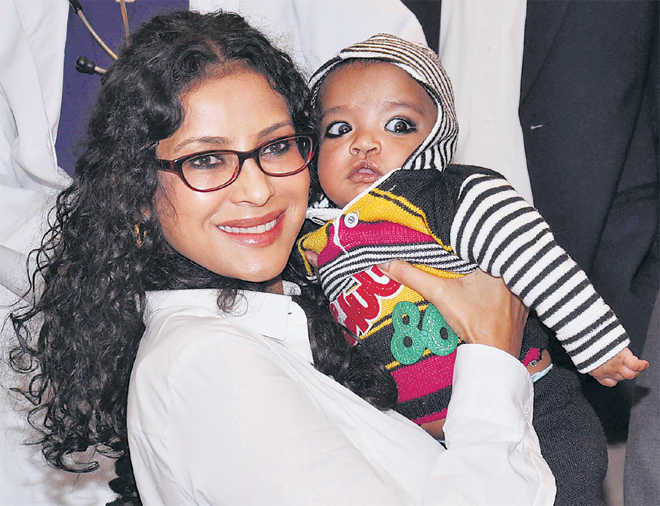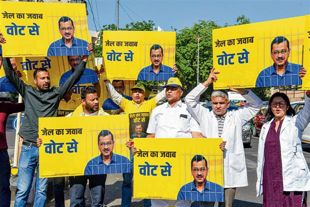
Caring for children with cleft lip. Tribune photo
Naba Kishor Pujari
Bangalore-based author and development practitioner
Advancement in medical sciences has evidenced that facial deformity like cleft lip and palate are treatable health conditions and a successful cleft surgery can help the patients lead a normal life. Most of the cleft surgeons around the world agree that cleft lips should be treated by three to six months while cleft palates usually can be treated between nine and 18 months.
Cases of cleft are found all around the world. However, awareness of cleft treatment, myths associated with it and access to healthcare services pose a challenge and divide statistics between developing and developed countries in terms of unrepaired cases of the cleft. In most developed countries, people are more aware of cleft as a treatable health condition and they have better healthcare facilities. In contrast, people's perception on cleft and a missing link between the service provider and service seekers result in a large number of cleft cases being untreated in developing countries.
Myths related to cleft
In India alone, 35,000 children are born with cleft every year and sadly one out of every 10 of them don't see their first birthday. A majority of the cleft children come from poor families who cannot afford treatment. But what is most shocking is the way people perceive the cleft in our country.
Studies reveal that a child with a facial deformity is not just measured a mere disfigurement that may have happened due to health-related deficiencies of parents but is more like a taboo. In India, myths related to cleft abound and most of them are derived from religious beliefs. Buddhists believe that a handicap or deformity is an act of karma or fate. Thus, there is greater passivity and a fatalistic outlook of their disorder compared to the West. Hindus believe that fate causes a baby to be born with a cleft.
Then there are several myths regarding how a child is born with a cleft, such as using scissors or cutting lime during pregnancy or looking at certain animals.
A recent study on the psycho-social effects of cleft in Indian society done by Maike, a German scholar who spent around half a year living and studying perceptual analysis on cleft in India, reveals that "misperception related to the cause of cleft is high especially in India even though it exists equally in other Asian and African countries in some other forms."
There is evidence from Kerala, Karnataka and other states where either the child's father committed suicide or abandoned his family or the family is socially excluded because the child was born with a cleft. This warrants a serious concern.
Medical reasons for cleft
Medical research shows that cleft lip and palate happens when the mouth tissue doesn't fuse correctly during development in the womb during the first trimester. Though scientists aren't sure what causes this to happen, they have a strong belief that poor nutrition during pregnancy and infections shortly after conception could trigger the condition. But this is not exactly how the communities, especially in the developing world, perceive this facial deformity.
Voluntary organisations have come up to support cleft surgeries free of cost for needy and underprivileged children. Charities such as Smile Train India, ABMSS, Operation Smile etc are not only funding surgeries but also scaling up awareness activities with the masses. This way, people can also know about the treatment possibilities and the missing link can be reduced. Ignorance is a major blockade which is embedded in the social and cultural life related to cleft, often leading to taboos.
More organisations and governments must come forward to educate people about the cleft and support the thousands of needy cleft children. That's the only way we can give them a better space in society; ensuring that they lead a life with dignity.



























